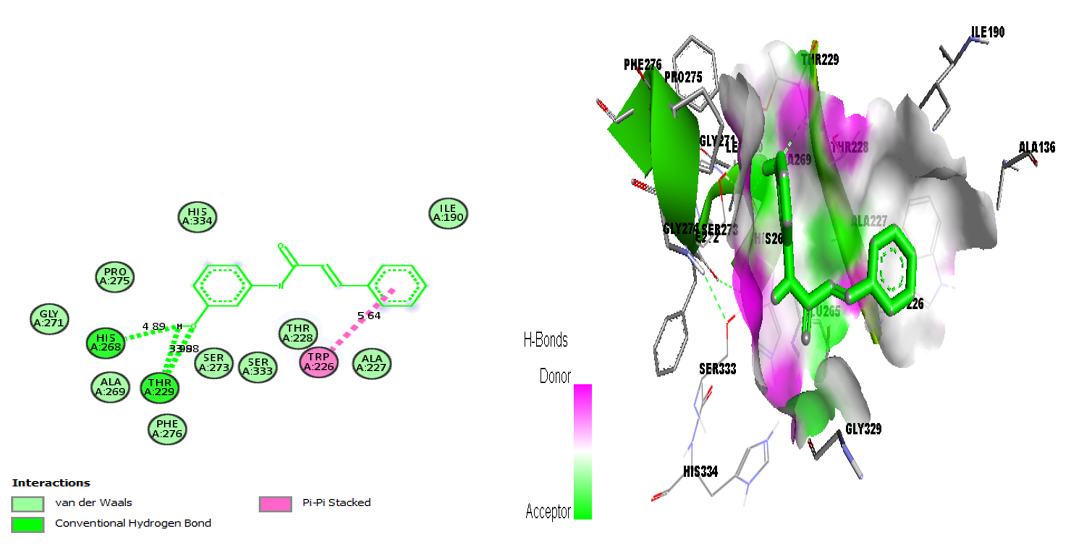SYNTHESIS, CHARACTERIZATION, AND IN SILICO STUDIES OF TRICARBONYL[Η⁴-5-(N-(4-HYDROXYPHENYL) CINNAMAMIDE) CYCLOHEXA-1,3-DIENE] IRON AND ITS DEMETALLATED DERIVATIVE AS POTENTIAL ANTILEISHMANIAL AGENTS
Keywords:
Leishmaniasis, Acetaminophen-based Chalcone, Tricarbonyl (ƞ5-cyclohexadienyl) Iron hexafluorophosphate, Demetallation, Silico StudiesAbstract
Leishmaniasis is a neglected tropical disease caused by a protozoan species of the genus Leishmania. The treatment of leishmaniasis has remained insufficient due the limitations of existing drugs. This has necessitated the need to search for new drugs. Acetaminophen-based chalcone N-(4-hydroxylphenylcinnamamide (ACCH) of tricarbonyl (ƞ5-cyclohexadienyl) Iron hexafluorophosphate have been synthesized according to a published procedure to give tricarbonyl [ƞ4-5(N-(4-hydroxylphenyl) cinnamamide) cyclohexa-1,3-diene) Iron (ADDUCT) which on removal of the tricarbonyl moiety through demetallation gave (E)-3-(1ʹ,2ʹ-dihydro-[1ʹ,1ʹ-biphenyl]-3-yl)-N-(4-hydroxyphenyl)acrylamide) (DEM). The synthesized compounds were characterized using Infra-red measurement. The In-silico studies of ACCH, ADDUCT and DEM were conducted against leishmanolysin (ID PDB: 1LML) using PyRx and visualized using Biovia Discovery 2024 with Miltefosine used as standard drug. The ADMET analysis of the synthesized compounds and the standard drugs was carried out using SwissADME and Protox 3.0. The Infra-red data showed the presence of ν(CO) band due to coordinated diene organometallic moiety at 2100 cm-1 and 1910 cm-1 in the ADDUCT, absent in DEM and the emergence of new Fe-C band at 495 cm-1 . The docking results showed that ACCH, ADDUCT and DEM with docking scores values of -6.4, -7.4, and -8.1 kcal/mol interact more with amino acids in the active sites of receptor protein via H-bond, pi-pi interaction than the standard drugs miltefosine (docking score -5.0 kcal/mol). ADMET analysis showed good oral bioavailability, less toxicity and high gastrointestinal absorption compared to Miltefosine. This can serve as a lead to potential antileishmanial drugs.

Published
How to Cite
Issue
Section
Copyright (c) 2025 Tunmise Eugene-Osoikhia, Racheal Oluwaseun Abiodun, Sunday Ogwuche

This work is licensed under a Creative Commons Attribution 4.0 International License.




